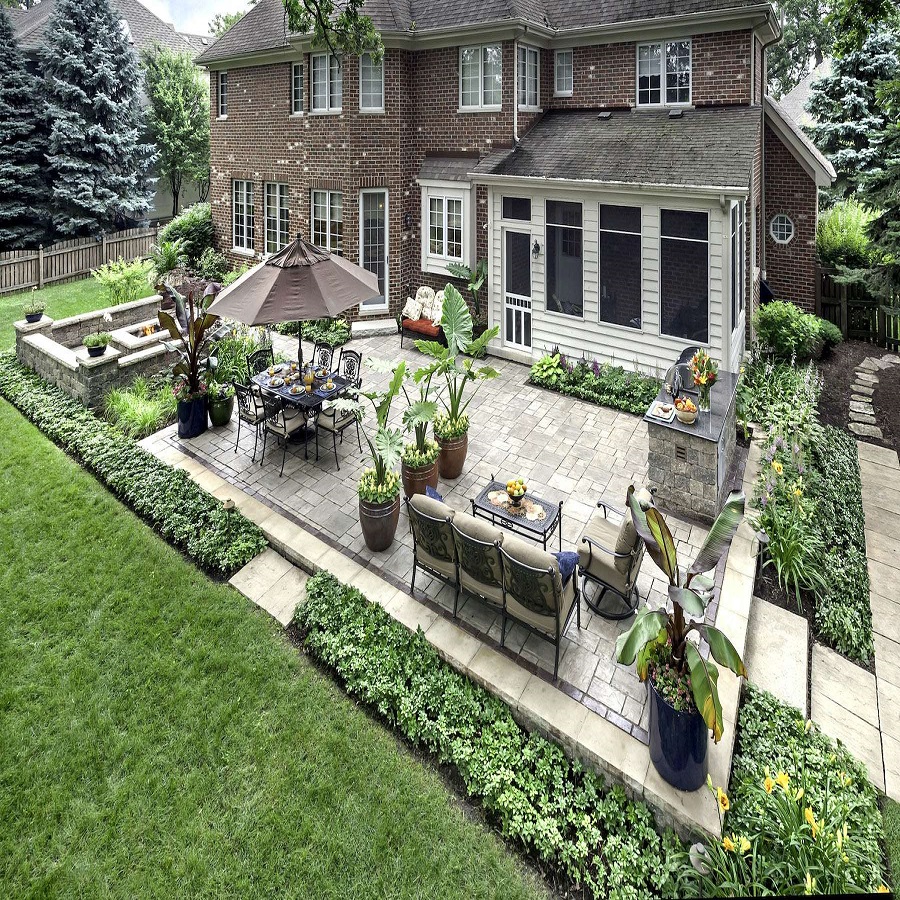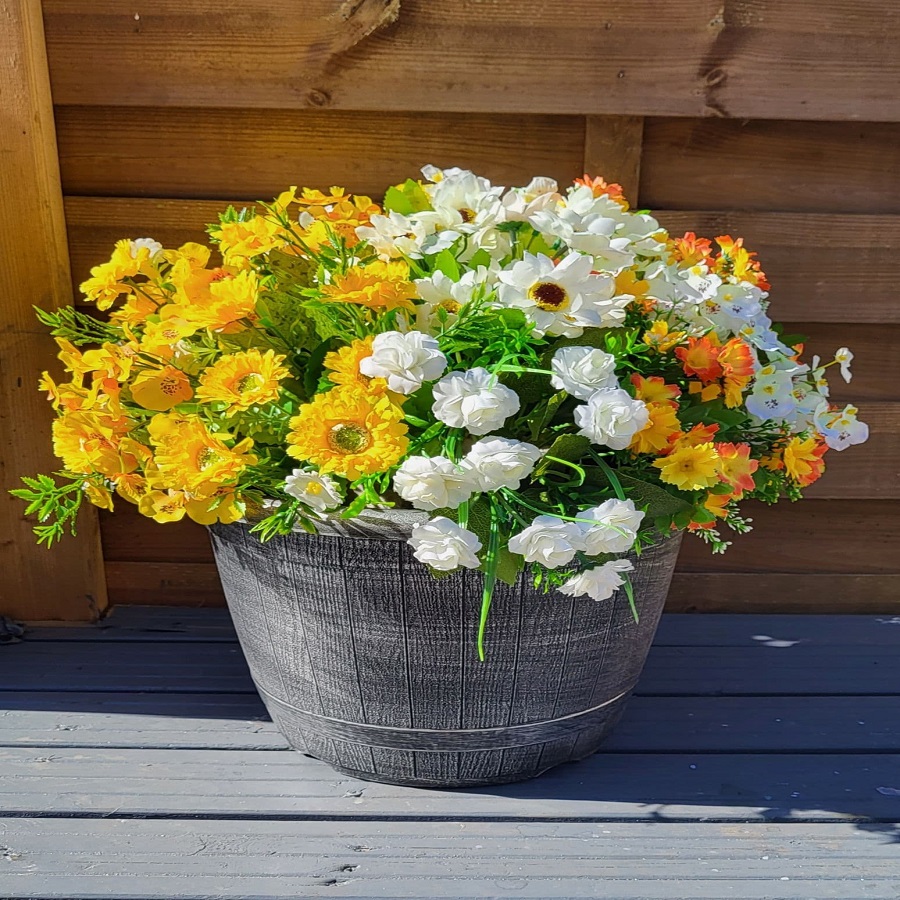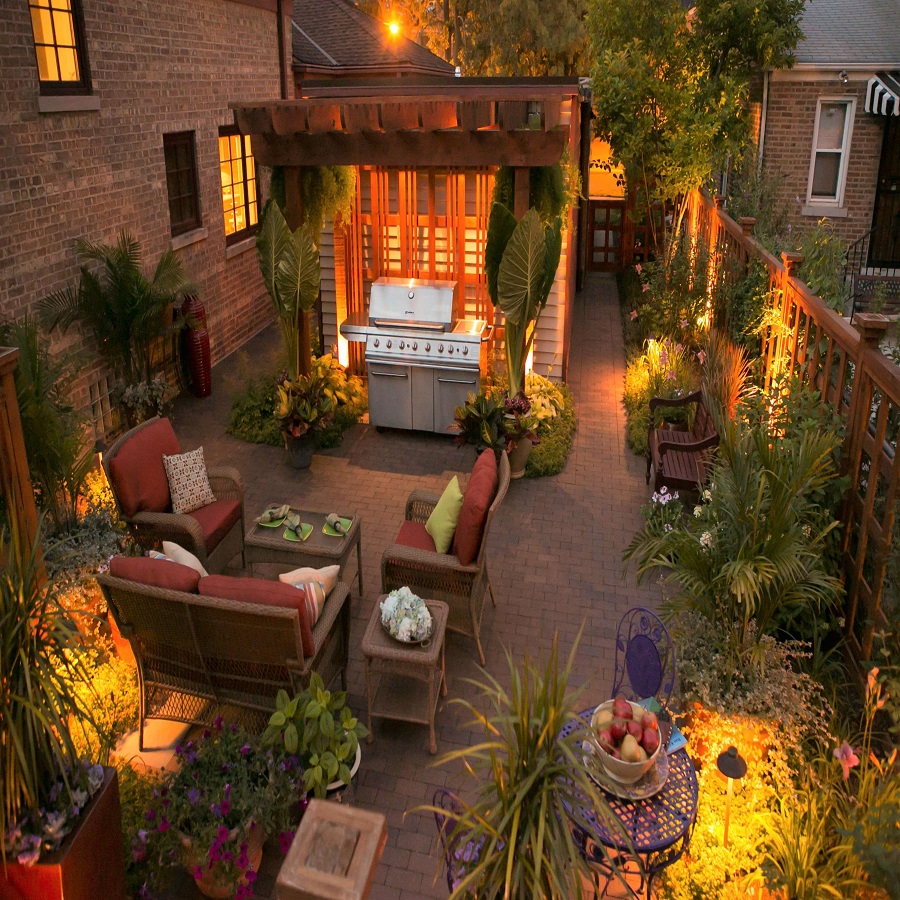Creating a vibrant outdoor oasis can transform your garden, balcony, or patio into a stunning retreat. One of the simplest ways to enhance your outdoor space is by strategically arranging flower pots. This article will explore various techniques, styles, and tips for arranging flower pots to achieve a beautiful and harmonious look in your outdoor environment.
Understanding the Basics of Flower Pot Arrangement
The Importance of Scale and Proportion
When arranging flower pots outdoors, understanding scale and proportion is crucial. The size of your pots should complement the space they occupy. For smaller areas, opt for pots that are slightly smaller to avoid overwhelming the space. Conversely, larger pots can make a bold statement in expansive gardens or patios.
Consider the height of the plants as well. Taller plants should be placed at the back of arrangements or in the center if you’re viewing from all sides. This ensures that shorter plants are visible and can be appreciated. Creating layers with varying heights adds depth and interest to your arrangement.
Choosing the Right Pots
The type of pots you choose significantly impacts the overall look of your outdoor oasis. Materials like terracotta, ceramic, and metal each offer different aesthetic qualities. Terracotta pots have a classic, rustic charm, while ceramic pots can be colorful and vibrant, perfect for adding personality to your space.
Additionally, consider the finish of the pots. Glossy finishes reflect light and can brighten up shady areas, while matte finishes create a more subdued, sophisticated look. Mixing different materials can also create a visually interesting display, but ensure that they complement each other in color and style.

Selecting the Perfect Plants
Understanding Plant Characteristics
Before arranging your flower pots, it’s essential to select the right plants. Understanding the characteristics of various plants, such as their growth habits, light requirements, and watering needs, will help you create a harmonious arrangement.
For instance, some plants thrive in full sun, while others prefer shade. Grouping plants with similar light and water needs will ensure they flourish together. Additionally, consider the growth rate and size of the plants at maturity. Avoid placing fast-growing plants with slower ones, as this can lead to overcrowding and competition for resources.
Seasonal Considerations
Choosing plants that bloom in different seasons can provide year-round interest in your outdoor oasis. For example, spring-flowering plants like pansies and tulips can be followed by summer bloomers such as petunias and geraniums, and finally, fall favorites like chrysanthemums and asters can extend the beauty of your arrangements.
Incorporating evergreen plants into your arrangements can also provide structure and greenery during the winter months. Consider the seasonal changes in your climate to select plants that will thrive and maintain their visual appeal throughout the year.
Designing Your Arrangement
Creating a Focal Point
A successful flower pot arrangement often includes a focal point that draws the eye. This could be a unique plant with striking flowers, an interesting pot, or even an artistic element like a statue or decorative trellis.
Position your focal point at the center or at a visually striking spot within your arrangement. Surround it with complementary plants that enhance its beauty without overshadowing it. Use varying heights, colors, and textures to create a balanced composition that invites exploration.
Utilizing Color Theory
Color plays a pivotal role in flower pot arrangements. Utilizing color theory can help you select plants that harmonize beautifully. Consider using a monochromatic scheme for a serene and cohesive look, or a complementary color scheme for a vibrant and energetic display.
For example, pairing purple flowers with yellow or orange accents can create a striking contrast that adds visual excitement. Additionally, consider the foliage color as well; variegated leaves can provide texture and depth to your arrangement, making it more dynamic.
Arranging Flower Pots in Different Spaces
On Patios and Balconies
Patios and balconies often benefit from a thoughtful arrangement of flower pots. To maximize space, consider using tiered plant stands or wall-mounted pots. This approach not only saves ground space but also adds vertical interest to your design.
When arranging on a patio, consider the flow of the space. Place larger pots in corners or along walls to create a sense of enclosure, while smaller pots can be scattered throughout for a more casual look. Group pots of similar heights together to create cohesive clusters that feel intentional.
In Gardens and Landscapes
In a garden setting, flower pots can be used to define pathways or create focal points within flower beds. Consider using larger pots as anchors at the ends of paths or near seating areas. Grouping pots in odd numbers often creates a more natural and inviting feel.
Incorporate pots of varying heights to create a tiered effect, enhancing the visual appeal of your garden. Additionally, consider incorporating decorative elements like stones, mulch, or gravel around the pots to unify the space and provide a finished look.

Maintenance and Care for Your Arrangements
Watering and Fertilizing
Proper care is essential for maintaining the health and beauty of your flower pot arrangements. Regular watering is crucial, especially during hot summer months when pots can dry out quickly. Consider installing a drip irrigation system or using self-watering pots to simplify the process.
Fertilizing your plants regularly will also encourage vibrant growth and flowering. Use a balanced fertilizer every few weeks during the growing season, and consider organic options to promote healthy soil. Be mindful of each plant’s specific nutrient requirements to ensure optimal health.
Pruning and Deadheading
Regular pruning and deadheading can enhance the overall appearance of your flower pots. Deadheading spent flowers encourages new blooms and keeps the plants looking tidy. Additionally, pruning can help manage plant size and shape, preventing overcrowding and promoting air circulation.
Be attentive to any signs of pests or disease, as these can quickly affect the health of your arrangements. Early intervention with organic pest control methods can help maintain the vitality of your plants.
Adding Decorative Elements
Incorporating Garden Art
In addition to plants, incorporating decorative elements can enhance the aesthetic of your flower pot arrangements. Garden art, such as sculptures, birdhouses, or wind chimes, can add a personal touch and create visual interest.
Position art pieces strategically to complement your flower pots without overpowering them. For example, a tall sculpture can create height next to shorter pots, adding dimension to your arrangement.
Using Mulch and Decorative Stones
Adding mulch or decorative stones around your flower pots not only enhances the visual appeal but also helps retain moisture in the soil. Organic mulches, such as bark or straw, can improve soil quality over time, while decorative stones can provide a clean, polished look.
Choose materials that complement your pots and plants. For instance, light-colored stones can contrast beautifully with dark pots, while earthy tones can create a cohesive, natural feel.

Conclusion: Transforming Your Outdoor Space
Arranging flower pots can transform any outdoor space into a vibrant oasis, providing beauty and tranquility. By understanding the principles of scale, selecting the right plants, and designing thoughtful arrangements, you can create a stunning environment that reflects your personal style.
Remember to incorporate decorative elements and consider maintenance for lasting beauty. With a little creativity and care, your outdoor oasis can thrive throughout the seasons, offering a peaceful retreat for relaxation and enjoyment. Embrace the process and enjoy the journey of creating a captivating outdoor sanctuary with your flower pots!
